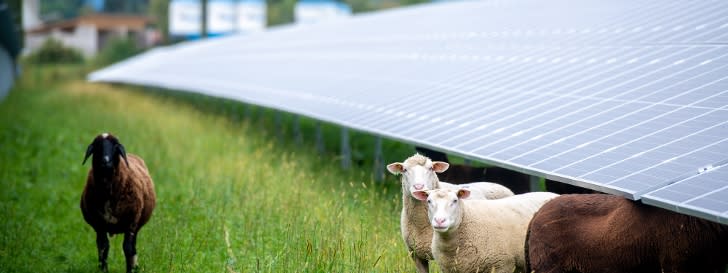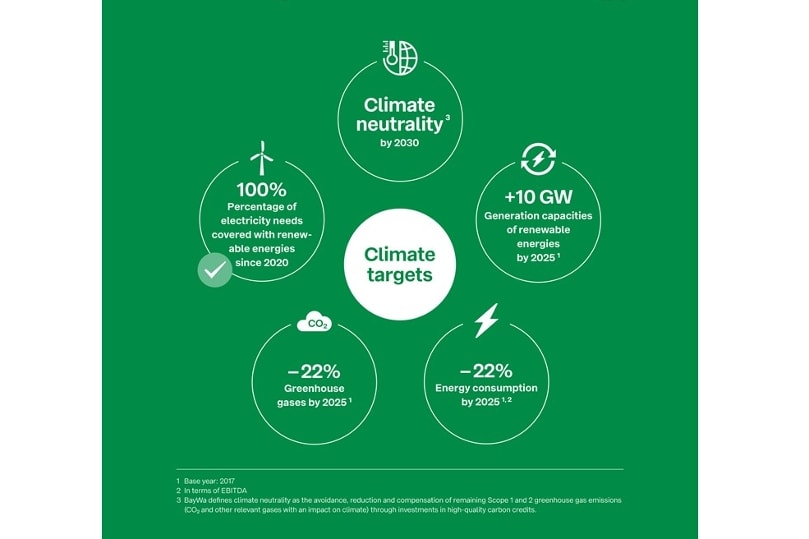
Climate strategy
Responsibility for climate & environment
As a global company operating in the fields of agriculture and nutrition, construction and housing, as well as electricity, heating and mobility, BayWa's business activities have an impact on the environment and climate. The company aims to reduce negative impacts as far as possible and contribute to protecting natural resources. Its climate strategy is a key part of this.
BayWa Climate Strategy 2025
In 2018, BayWa adopted its Climate Strategy 2025, which focuses on energy consumption and greenhouse gas emissions from its own business activities and its contribution to the global energy transition:
- Covering the Group's electricity requirements from 100% renewable energies.
We have been achieving this goal since 2022. - Reducing GHG emissions from BayWa sites, company cars and our own logistics by 22 percent by 2025 compared to 2017.
By the end of 2024, we had reduced GHG emissions by 22.6%. - In addition, BayWa has set itself a relative energy target in its climate strategy: to achieve a 22 percent reduction in energy intensity per euro of EBITDA by 2025 compared to 2017.
Due to the negative EBITDA result in 2024, it does not make sense to measure progress toward this target for 2024. - Creation of additional renewable energy generation capacity of 10 gigawatts.
Since 2017, a total of 20.8 gigawatts of capacity has been brought to market.
A fifth target aimed for carbon neutrality in Scope 1 & 2 by 2030 by offsetting remaining GHG emissions through investment in climate protection projects. This target is no longer being pursued for strategic reasons.
Outlook: Environmental targets for 2035
As part of its new Sustainability Strategy 2035, BayWa will be setting new targets in the field of environment and climate for the period up to 2035 in 2026. These will include sub-targets for increasing energy efficiency and reducing greenhouse gas emissions from its own activities and the upstream and downstream value chain. This target framework will then be supplemented by sub-targets for biodiversity & ecosystems and water, with a focus on the supply chain.
